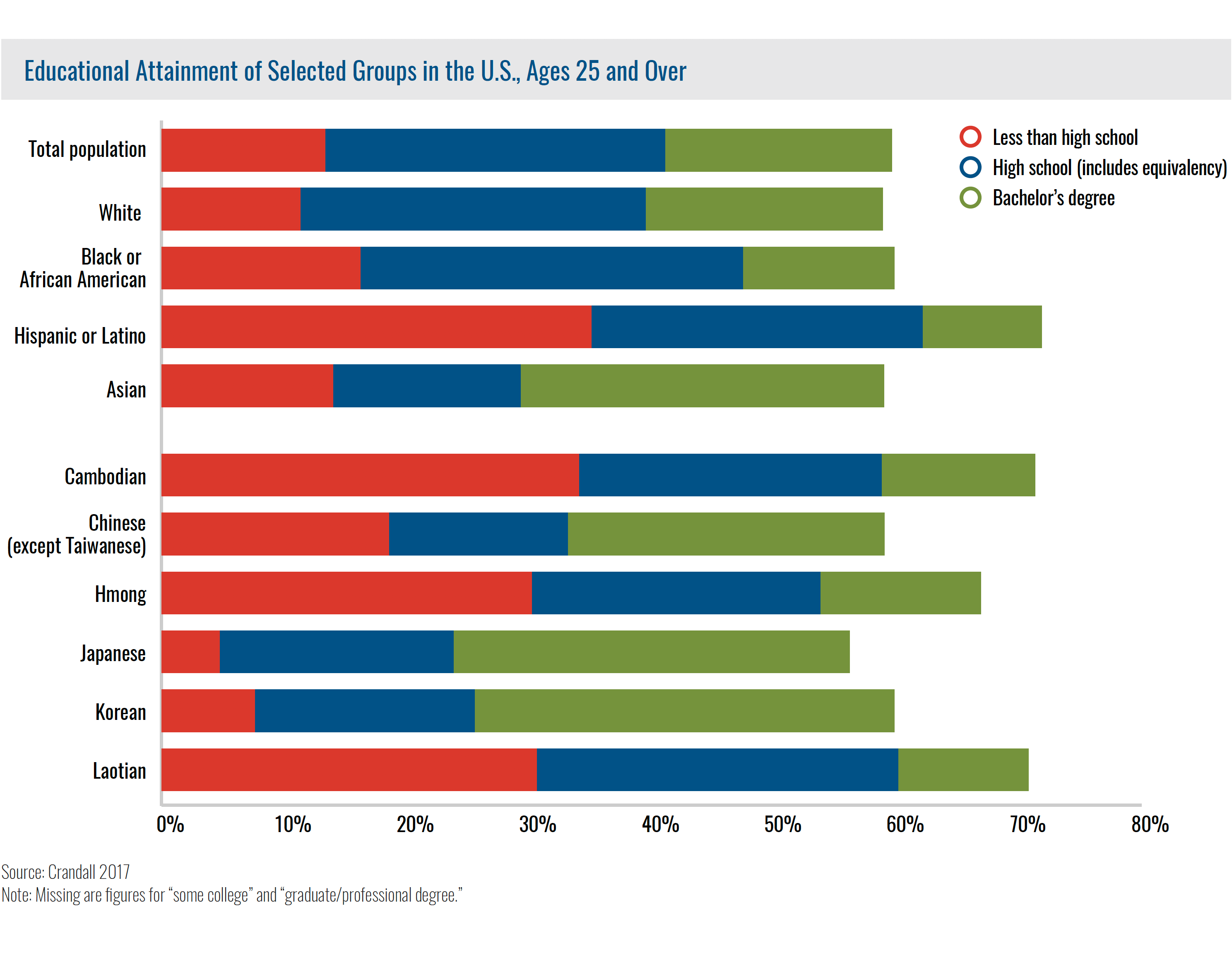By Walter Allen, Chantal Jones, and Channel McLewis
Background and Formation of Racial and Ethnic Categories
Racial and ethnic categorizations in society (and at higher education institutions) are not neutral, but rather they are informed by historical, social, political, and economic contexts. Such classification of individuals and groups dates to the founding of the United States, with racial classifications tracing back to preconceptions of biological and cultural differences that today are understood as tools to uphold majority control and power. Omi and Winant (2015) define race as a social construction used to create, organize, and validate a social order. Race and ethnicity operate as tools to distinguish between who is “the norm” and who is “the other” and outside the norm—a perspective also known as racial formation. Further, these authors contend that “race is a master category—a fundamental concept that has profoundly shaped, and continues to shape, the history, polity, economic structure, and culture of the United States” (Omi and Winant 2015, 106). In other words, how racial and ethnic categories are defined holds immense significance, helping to validate social hierarchies, distribute power, and uphold discrimination. For these and other reasons, scholars of race have long acknowledged that racial and ethnic categories are largely arbitrary and dependent on those with the power to create them.
How racial and ethnic categories are defined holds immense significance, helping to validate social hierarchies, distribute power, and uphold discrimination.
In the United States, the most salient of these classification systems is the U.S. Census—it is both a federal bureau and a constitutionally mandated process. Data derived from the Census is significant; it is used in federal and state policymaking, political redistricting, and disaster response, to name a few examples. Also significant (but less discussed) are the descriptive classifications themselves, including the racial and ethnic categories. For higher education, these categories are paramount given the mandate of postsecondary institutions to use them to report data to the federal government. Yet taking these categories at face value obscures their own discriminatory history.
Race scholar Gloria Ladson-Billings (1998) notes that “although racial categories in the U.S. Census have fluctuated over time, two categories have remained stable—Black and White.” The categories, she continues, “create for us a sense of polar opposites that posits a cultural ranking designed to tell us who is White or, perhaps more pointedly, who is not White” (8). The first Census classifications in 1790 illustrate this divide: free white men (both over and under 16 years of age), free white women, all other free persons, and [Black] slaves (Charles 2014).
Even today, the characteristics to prescribe who suitably “fits” within each racial category are mutable. For example, at different moments in time, the Census has categorized Mexican Americans as racially “white” or ethnically “Hispanic.” In her seminal text, Why Are All the Black Kids Sitting Together in the Cafeteria? And Other Conversations About Race, Beverly Daniel Tatum (2017) provides an important discussion of the changing language for common racial classifications. Tatum explores examples of Black rather than African American, Latinx rather than Hispanic, and regional variation in the use of terms American Indian and Native people rather than Native American, or Asian/Pacific Islanders rather than Asian Pacific Americans. Ultimately, Tatum advises to follow the examples of how people describe themselves.
Racial and Ethnic Categories in Higher Education
Just as in society, racial and ethnic categorization is common practice in higher education; it is most frequently used by administrators and higher education policymakers to guide decisions. In higher education, racial and ethnic categorization includes not only the categorization of students as “minority” but also the categorization of institutions as “minority serving.” Yet rarely are these racial and ethnic categories critiqued for being misrepresentative of the diverse characteristics and experiences of students (and others) sorted into the different boxes.
There is significant aggregation, for example, in how groups are classified as “underrepresented minority” or URM—labels that are often used to confer benefits such as financial aid and student support services (Park 2018). As an illustration, the University of California system includes in its URM definition African American, Hispanic/Latino(a), or American Indian students (University of California, n.d.). These categories do not take into account the historical and sociocultural diversity among Asian American and Pacific Islander students (especially so in California), including those populations that are disproportionately underrepresented in higher education, such as Hmong, Vietnamese, and Filipino/a students.
Extending the example to faculty classification, the City University of New York (CUNY) defines URM faculty as Asian, Black/African American, and Hispanic/Latino(a), and separately defines underrepresented groups as Asian, Black/African American, Hispanic/Latino(a), Italian Americans, and women (CUNY 2012). While we are not criticizing institutions for creating (additional) categories, it is important to articulate their history and meaning to institutional stakeholders and to revisit such categories on a regular basis in a way that includes the named populations in such decision-making.
Turning to educational research, the common practice of aggregating racial and ethnic data often results in misrepresentative categories. Groupings such as Black, Hispanic, and Asian—categories used throughout this very report—ultimately obscure who is within these large categories. Generally, research design, data analysis, and interpretation of findings rely on overarching categories that reduce rich diversity to simple categories or units of analysis. However, as many scholars note, the aggregation of students, particularly students of color, can distort observed results and lead to incorrect conclusions (Allen et al. 2008). Such aggregation of students can lead to the adoption of policies that further marginalize and penalize disadvantaged groups. For instance, rural, low-income whites or those who attended underperforming schools can be denied necessary academic support services by policies that ignore within-group diversity. Equally as problematic are policy blind spots that often omit Native Hawaiian students because of the tendency to dismiss some populations as insignificant due to small sample sizes (Chang, Nguyen, and Chandler 2015). This practice leads to statistically erasing populations, as they literally do not appear in the data.
As a result, many scholars call for greater disaggregation of racial and ethnic categories, especially at the institutional level, leading to greater nuance and thoughtful, granular narratives about student outcomes, experiences, and backgrounds (Chang, et al. 2015; Harper 2012; Teranishi 2007). As an example, when Asian American students are disaggregated, the myth of this group as a “model minority”[1] collapses since significant differences (e.g., in educational achievement and socioeconomic status) among subgroups are revealed (Teranishi 2007). The accompanying figure illustrates how relying on aggregate data ignores educational-attainment disparities within the pan-Asian group.
Finally, when it comes to higher education law and policy, many narratives around affirmative action or race-conscious policies use and misuse racial categories and their meaning, especially when advancing a political agenda. Opponents of these policies frame race-conscious decision-making as “racial preferential treatment” in a supposed color-blind society and “reverse discrimination” against white Americans (Crenshaw 2006). These opponents uphold that admissions should be based on color-blind merit (Bonilla-Silva 2017). Yet, many of these narratives rely on racial stereotypes—again, based on racial classifications—to discount the achievements of Black, indigenous, and Latinx students (Crenshaw 2006) and to misrepresent Asian Americans as the model minority in order to justify dismissal of race conscious policies (Chang 2011; Moses et al. 2019). A recent court case charging Harvard University (MA) with racial discrimination against Asian American students highlights how racial classifications can be misused, obscuring how race-conscious policies have benefited Southeast Asians and Pacific Islanders (Harmon 2018).
Looking Ahead
The use and often-misunderstood use of racial and ethnic classifications have serious implications for higher education institutions. Increased racial and ethnic diversity requires that higher education reflect our dynamic society, and yet perspectives rooted in a white majority often result in inadequate attention to the needs of increasingly diverse students. As higher education expands, diversifies, and seeks to serve a broader, more complex constituency, we must understand “that educational institutions operate in contradictory ways, with their potential to oppress and marginalize coexisting with their potential to emancipate and empower” (Solórzano and Yosso 2002, 26).
At the same time, the history of racial and ethnic categorization in society, and in higher education, demands systematic examination of how these categories are created and deployed. It is necessary to acknowledge the historical and contemporary relationship between racial categories and racial hierarchies as we seek to disrupt notions that race does not matter in higher education. Substantial evidence in research, theoretical framing, practice, and policies make it clear that American higher education is not color-blind, nor is larger society.
It is our observation that conversations on race and racism in higher education are necessary and valuable. We must bring greater energy and nuance to challenge outdated ideas, such as the notion of racial and ethnic categories as absolute. Among the scholarly resources to help college administrators better understand the influence and implications of such categories and their perceived meaning is Beverly Daniel Tatum’s second edition of Why Are All the Black Kids Sitting Together in the Cafeteria? And Other Conversations About Race (2017). Another important source is Julie J. Park’s 2018 book, Race on Campus: Debunking Myths with Data. The work of Schoem et al. (2001) on intergroup dialogue demonstrates the important process of face-to-face relationship building “in which different groups come together to discuss issues of community and conflict” (15). Additionally, the documentary Race: The Power of an Illusion critically examines what race is and offers useful tools for questioning beliefs and assumptions (Adelman 2003).
To close, we must not lose sight of the paradox that race is an ephemeral, elusive, imaginary construct. At the same time, race has real, profound, and lived consequences for students who are sorted across the different boxes. We are right to challenge the purpose and consequences of racial and ethnic categories, including their applicability to the students we serve. Going a step further, the field should seek to better understand how these categories intersect with other identities, such as class, gender, sexuality, country of origin, religion, and the differently abled (Crenshaw 1989). To achieve the goals of inclusive diversity and academic excellence, higher education institutions must of necessity compile the most reliable, comprehensive, informative data possible. When used critically and judiciously, data categorized by race and ethnicity can provide valuable information to help guide efforts to address persistent inequities in higher education.
References
Adelman, Larry. 2003. Race: The Power of an Illusion. San Francisco: California Newsreel.
Allen, Walter R., Susan A. Suh, Gloria González, and Joshua Yang. 2008. “Qui Bono? Explaining—or Defending—Winners and Losers in the Competition for Educational Achievement.” In White Logic, White Methods: Racism and Methodology, edited by Tukufu Zuberi and Eduardo Bonilla-Silva, 217–238. Lanham, MD: Rowman & Littlefield Publishers.
Bonilla-Silva, Eduardo. 2017. Racism Without Racists: Color-Blind Racism and the Persistence of Racial Inequality in America. 3rd ed. Lanham, MD: Rowman & Littlefield Publishers.
Chang, Mitchell J. 2011. “Battle Hymn of the Model Minority Myth.” Amerasia Journal 37 (2): 137–143.
Chang, Mitchell J., Mike Hoa Nguyen, and Kapua L. Chandler. 2015. “Can Data Disaggregation Resolve Blind Spots in Policy Making? Examining a Case for Native Hawaiians.” APPI Nexus: Policy, Practice, and Community 13 (1–2): 295–320.
Charles, Christopher. 2014. “The Representations of Race in the Decennial Censuses of the United States from 1970–2010.” Working paper, last modified July 25, 2015. https://papers.ssrn.com/sol3/papers.cfm?abstract_id=2529562.
Crandall, Jennifer. 2017. “Pan-Asian Student Classifications in Higher Education: What the Data Do and Don’t Tell Us.” Higher Education Today (blog), American Council on Education. December 13, 2017. https://www.higheredtoday.org/2017/12/13/pan-asian-student-classifications-higher-education-data-dont-tell-us/.
Crenshaw, Kimberlé. 1989. “Demarginalizing the Intersection of Race and Sex: A Black Feminist Critique of Antidiscrimination Doctrine, Feminist Theory, and Antiracist Politics.” The University of Chicago Legal Forum 1989 (1): 139–167.
Crenshaw, Kimberlé. 2006. “Framing Affirmative Action.” Michigan Law Review First Impressions 105 (1): 123–133.
CUNY (The City University of New York). 2012. Building on a Strong Foundation: A Strategy of Enhancing CUNY’s Leadership in the Areas of Faculty Diversity and Inclusion. New York: CUNY. https://www.cuny.edu/about/administration/offices/ohrm/diversity/DiversityActionPlan/DiversityActionPlan_Revised.pdf.
Harmon, Noel. 2018. “The Reality of Asians and Higher Education Access.” Inside Higher Ed, November 26, 2018. https://www.insidehighered.com/admissions/views/2018/11/26/harvard-case-has-given-false-impression-access-issues-faced- asians.
Harper, Shaun R. 2012. “Race Without Racism: How Higher Education Researchers Minimize Racist Institutional Norms.” The Review of Higher Education 36 (1): 9–29
Ladson-Billings, Gloria. 1998. “Just What Is Critical Race Theory and What’s It Doing in a Nice Field Like Education?” International Journal of Qualitative Studies in Education 11 (1): 7–24.
Moses, Michele S., Daryl J. Maeda, and Christina H. Paguyo. 2019. “Racial Politics, Resentment, and Affirmative Action: Asian Americans as ‘Model’ College Applicants.” The Journal of Higher Education 90 (1): 1-26.
Omi, Michael, and Howard Winant. 2015. Racial Formation in the United States. 3rd ed. New York: Routledge. Park, Julie J. 2018. Race on Campus: Debunking Myths with Data. Cambridge, MA: Harvard Education Press.
Schoem, David, Sylvia Hurtado, Todd Sevig, Mark Chesler, and Stephen H. Sumida. 2001. “Intergroup Dialogue: Democracy at Work in Theory and Practice.” In Intergroup Dialogue: Deliberative Democracy in School, College, Community, and Workplace, edited by David Schoem and Sylvia Hurtado, 1–21. Ann Arbor, MI: University of Michigan Press.
Solórzano, Daniel G., and Tara J. Yosso. 2002. “Critical Race Methodology: Counter-Storytelling as an Analytical Framework for Education Research.” Qualitative Inquiry 8 (1): 23–44.
Tatum, Beverly Daniel. 2017. Why Are All the Black Kids Sitting Together in the Cafeteria? And Other Conversations About Race. Revised and updated. New York: Basic Books.
Teranishi, Robert T. 2007. “Race, Ethnicity, and Higher Education Policy: The Use of Critical Quantitative Research.” New Directions for Institutional Research 2007 (133): 37–49.
University of California. n.d. “CA’s Freshman Diversity Pipeline to UC.” https://www.universityofcalifornia.edu/infocenter/cahs-pipeline.
[1] For a discussion of the model minority myth see https://www.higheredtoday.org/2017/12/13/pan-asian-student-classifications-higher-education-data-dont-tell-us/.


